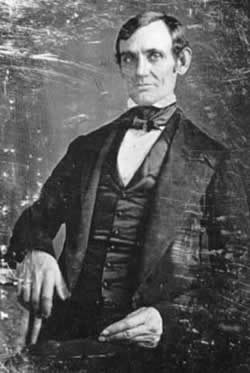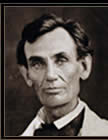The Kaplan Daguerreotype of Abraham Lincoln
The Forensic Evidence
by Claude N. Frechette, M.D.
introduction
In 1987, a photographic print of an exceptionally high quality daguerreotype of a robust, confident-looking, and smartly dressed young man was brought to my office in Paris on, interestingly, Lincoln's birthday, February 12 (Figure 1a). The owner of the daguerreotype, which had been purchased from a gallery in New York City in 1977, was Mr. Albert Kaplan, an American then residing in Paris. Mr. Kaplan was convinced, after years of personal research, that the young man pictured in the daguerreotype was Abraham Lincoln. He had sought me out to subject his conviction to the science of my medical specialty.
|
Figure 1a  |
Figure 1b  |
This daguerreotype, referred to as the Kaplan (Figure 1a), dates from the early 1840s {1,2,3,4}. Born in 1809, Lincoln would have been in his early 30s. Hitherto, the earliest known photographic portrait of Abraham Lincoln, known as Meserve #1, was made in 1848 when Lincoln was 39 years old (Figure 1b) {5}.
Numerous accounts have revealed that Lincoln underwent a noticeable change in his physical appearance beginning in January 1841 as a result of a grave emotional crisis {6}. This coincides with his reported failure to go through with his scheduled marriage to Mary Todd, leaving her literally waiting for him at the altar. (They were married the following year.) This emotional crisis, just one of a series of such episodes to plague him throughout his life, was the cause of Lincoln losing a considerable amount of weight {7}.
Young Lincoln was known to be muscular and extremely powerful {8}. The older Lincoln was much thinner, and also prematurely aged by personal problems and the responsibility and anguish of the office he held during perhaps the greatest crisis the United States has ever undergone{9}.
Upon reflection it seemed reasonable to me that the most thorough and objective approach in examining a century-and-a-half old image seemed to be that of a plastic surgeon who evaluates pre- and postoperative photographs and anthropomorphic data of patients with cranio-facial deformities.

